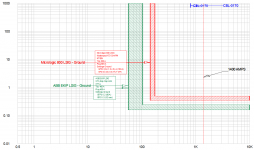main197
Member
- Location
- California
- Occupation
- EE
Upstream breaker:
Sq D 800A LSIG Micrologic 6.0P
Ground Settings: 160A, 0.4 s
S: 5120A, 0.2S and Inst: 6400A
Downstream breaker:
ABB 400A Ekip Dip LSIG
Ground Settings: 80A, 0.2 s
S: 600A, 0.2 s and Inst: 2200A
Shouldn't the ground fault at the load side of 400A breaker trip it instead of the 800A breaker? The fault current was ~1400A and tripped the 800A instead of the 400A breaker. What could be the reasons? Improper coordination settings? Haven't checked the TCCs using ETAP or SKM.
Sq D 800A LSIG Micrologic 6.0P
Ground Settings: 160A, 0.4 s
S: 5120A, 0.2S and Inst: 6400A
Downstream breaker:
ABB 400A Ekip Dip LSIG
Ground Settings: 80A, 0.2 s
S: 600A, 0.2 s and Inst: 2200A
Shouldn't the ground fault at the load side of 400A breaker trip it instead of the 800A breaker? The fault current was ~1400A and tripped the 800A instead of the 400A breaker. What could be the reasons? Improper coordination settings? Haven't checked the TCCs using ETAP or SKM.


